Chapter 7
Conclusion and Key Takeaways
![[BCM] [IOSH] [C7] Conclusion and Key Takeaways](https://no-cache.hubspot.com/cta/default/3893111/ec4a735f-bb3a-4498-bcc8-79a7e6bf65a9.png) As we wrap up today’s session, let’s take a moment to reflect on the key points we’ve discussed and explore the imperative role safety culture plays in business continuity.
As we wrap up today’s session, let’s take a moment to reflect on the key points we’ve discussed and explore the imperative role safety culture plays in business continuity.
We’ve explored several facets of how safety and continuity are intertwined, how regional factors affect implementation, and how leadership can foster a resilient safety culture.
Key Points Discussed
The Importance of Safety Culture in Business Continuity
We began by understanding that safety culture isn’t just about minimising accidents—it’s about ensuring that the organisation is prepared, resilient, and capable of maintaining operations during disruptions.
Safety culture creates a foundation of trust, communication, and agility, which is critical for business continuity, especially during times of crisis.
The Link Between Safety Culture and Continuity Planning
We explored how a proactive safety culture is key to effective business continuity planning (BCP).
A strong safety culture fosters a prepared workforce that knows how to respond to threats quickly and efficiently, ensuring minimal disruption to critical functions. Safety isn't just a protective measure; it’s an enabler of business resilience.
Regional Challenges in Asia
We delved into the regional barriers unique to Asia, including diverse regulatory environments, varying cultural attitudes toward risk, and communication hurdles.
We also discussed how these barriers shape business continuity planning and how companies can navigate these challenges to implement effective safety strategies.
Integration of Health & Safety into Continuity Strategies
We covered practical strategies for integrating health and safety into continuity planning, including using tools like ISO 22301, risk assessments, and incident command systems.
By aligning health and safety goals with continuity objectives, organisations create a cohesive response plan that safeguards both employees and operations during crises.
The Role of Leadership in Fostering Resilience
We discussed how leadership behaviours directly shape the safety culture of an organisation. Leaders must be committed, communicative, accountable, and supportive of continuous learning.
Their actions set the tone for the rest of the organisation, reinforcing the idea that safety is not a one-time initiative but an ongoing priority.
Overcoming Regional Barriers
In our interactive discussion, we shared practical solutions to overcoming the regional barriers in Asia, from navigating regulatory complexity to fostering a culture of safety amidst diverse cultural attitudes toward risk.
The exchange of best practices underscored the need for localised and flexible approaches that align with global business continuity goals.
The Importance of Cultivating a Safety Culture for Building Resilience
The overarching message today is that safety culture is not a supplementary aspect of business continuity—it is central to it.
Cultivating a strong safety culture equips organisations with the resilience needed to handle unexpected disruptions, from natural disasters to cyberattacks.
When safety is embedded in every aspect of an organisation—from leadership to frontline employees—it creates a robust foundation for adaptability, quick response, and sustained operations during crises.
A proactive safety culture:
- Prevents accidents by identifying and mitigating risks early.
- Supports recovery by ensuring that teams are trained and ready to respond to emergencies.
- Builds trust with employees, customers, and stakeholders, ensuring long-term organisational stability.
Ultimately, safety culture and business continuity are inseparable—one cannot thrive without the other.
By prioritising safety in your business continuity strategies, you strengthen your organisation's ability to adapt to disruptions, recover quickly, and maintain operations even in the face of significant challenges.
Key Takeaways
- Safety culture is foundational to business continuity—it’s about more than compliance; it’s about creating an environment where safety is prioritised at all levels, ensuring preparedness and resilience in times of crisis.
- Leaders play a pivotal role in cultivating a resilient safety culture. Their commitment, communication, and accountability directly influence how safety is integrated into the organisation’s broader continuity strategy.
- Regional challenges in Asia—such as regulatory diversity, cultural differences, and resource constraints—demand localised approaches to safety and continuity. Understanding these barriers and finding ways to overcome them is essential for effective implementation.
- Integration of safety culture into business continuity requires proactive planning, the use of appropriate frameworks, and collaboration across departments. Health & safety professionals and business continuity teams must align their goals to build a resilient organisation.
- The path forward involves taking actionable steps to integrate safety culture into your continuity strategies. Whether you’re revisiting your risk assessments, updating training programs, or engaging leadership in fostering a safety-first mindset, every action counts in building a resilient organisation.
Encouraging Actionable Steps
As we conclude, I encourage each of you to take the lessons from today and apply them within your organisation. Here are a few actionable steps to help you integrate safety culture into your continuity strategies:
- Evaluate your current safety culture: Assess whether safety is embedded throughout your organisation and where improvements can be made.
- Strengthen leadership commitment to safety: Ensure that leaders at all levels are actively involved in promoting and modelling safety-first behaviours.
- Align business continuity and safety goals: Review your business continuity plans to ensure they are aligned with safety protocols, and identify any gaps that need to be addressed.
- Foster cross-departmental collaboration: Ensure that health & safety and business continuity teams work closely together to create integrated strategies for resilience.
- Invest in continuous improvement: Regularly review and update your safety and continuity plans, based on new risks, regulatory changes, and lessons learned from past disruptions.
By taking these steps, you will not only enhance your organisation’s ability to respond to crises but also create a workplace where employees feel empowered, protected, and ready to face any challenge.
Thank you for your participation today, and I wish you all the best in building resilient, safety-focused organisations.
This chapter wraps up the session by summarising the critical points, reinforcing the importance of safety culture for resilience, and providing clear, actionable steps for participants to take back to their organisations.
More Information About Business Continuity Management Courses

 To learn more about the course and schedule, click the buttons below for the BCM-300 Business Continuity Management Implementer [B-3] course and the BCM-5000 Business Continuity Management Expert Implementer [B-5].
To learn more about the course and schedule, click the buttons below for the BCM-300 Business Continuity Management Implementer [B-3] course and the BCM-5000 Business Continuity Management Expert Implementer [B-5].
![Register [BL-B-3]*](https://no-cache.hubspot.com/cta/default/3893111/ac6cf073-4cdd-4541-91ed-889f731d5076.png) |
 |
 |
 |
 |
 |
![FAQ [BL-B-3]](https://no-cache.hubspot.com/cta/default/3893111/b3824ba1-7aa1-4eb6-bef8-94f57121c5ae.png) |
If you have any questions, click to contact us.
|
 |
 |
 |
 |





![[BCM] [IOSH] [C1] Introduction_ Setting the Stage](https://no-cache.hubspot.com/cta/default/3893111/d8c69a3d-bcc9-406b-aeef-260b1e69e88e.png)
![[BCM] [IOSH] [C2] The Link Between Safety Culture and Business Continuity](https://no-cache.hubspot.com/cta/default/3893111/0cb99f42-8a29-4a2f-b806-e0cbaed5b1dc.png)
![[BCM] [IOSH] [C3] Region-Specific Challenges in Asia](https://no-cache.hubspot.com/cta/default/3893111/6db149bc-873b-40fa-8128-c3b79476e88a.png)
![[BCM] [IOSH] [C4] Integrating Health & Safety into Continuity Strategies](https://no-cache.hubspot.com/cta/default/3893111/113114e9-571d-4029-812c-10642cca64d8.png)
![[BCM] [IOSH] [C5] Leadership’s Role in Fostering a Resilient Safety Culture](https://no-cache.hubspot.com/cta/default/3893111/eb99d803-1581-44f3-8e93-832db437a4b7.png)
![[BCM] [IOSH] [C6] Interactive Discussion_ Overcoming Regional Barriers](https://no-cache.hubspot.com/cta/default/3893111/0fedcd93-7ffc-4d59-896c-bd2949fb3bef.png)
![Email to Sales Team [BCM Institute]](https://no-cache.hubspot.com/cta/default/3893111/3c53daeb-2836-4843-b0e0-645baee2ab9e.png)

